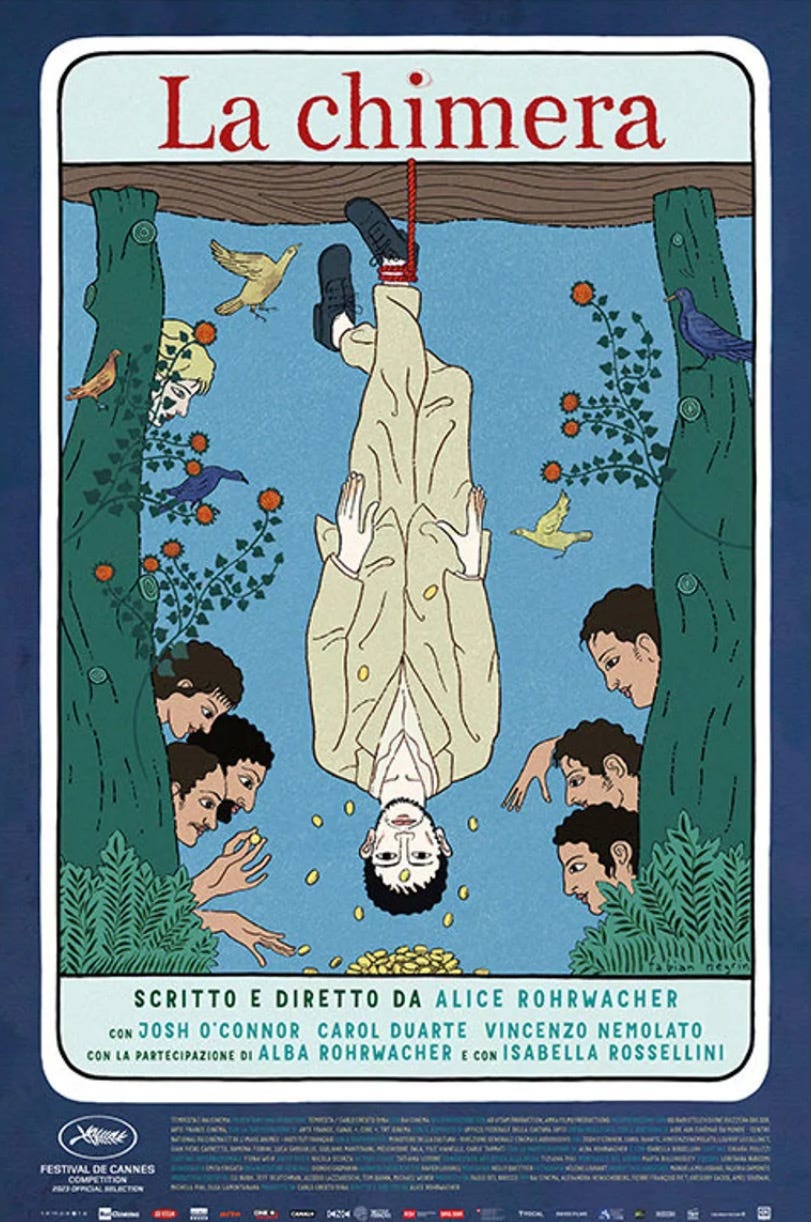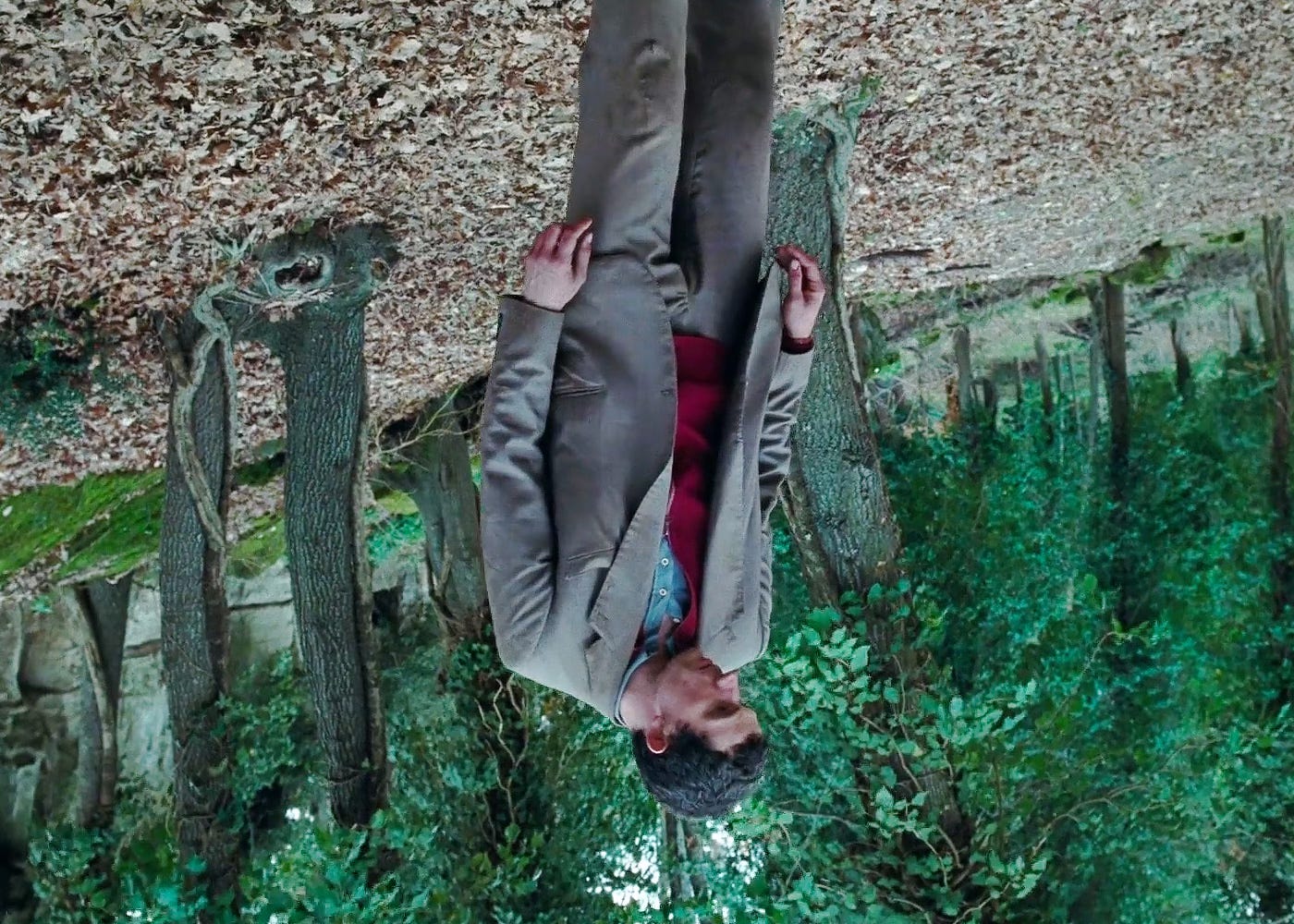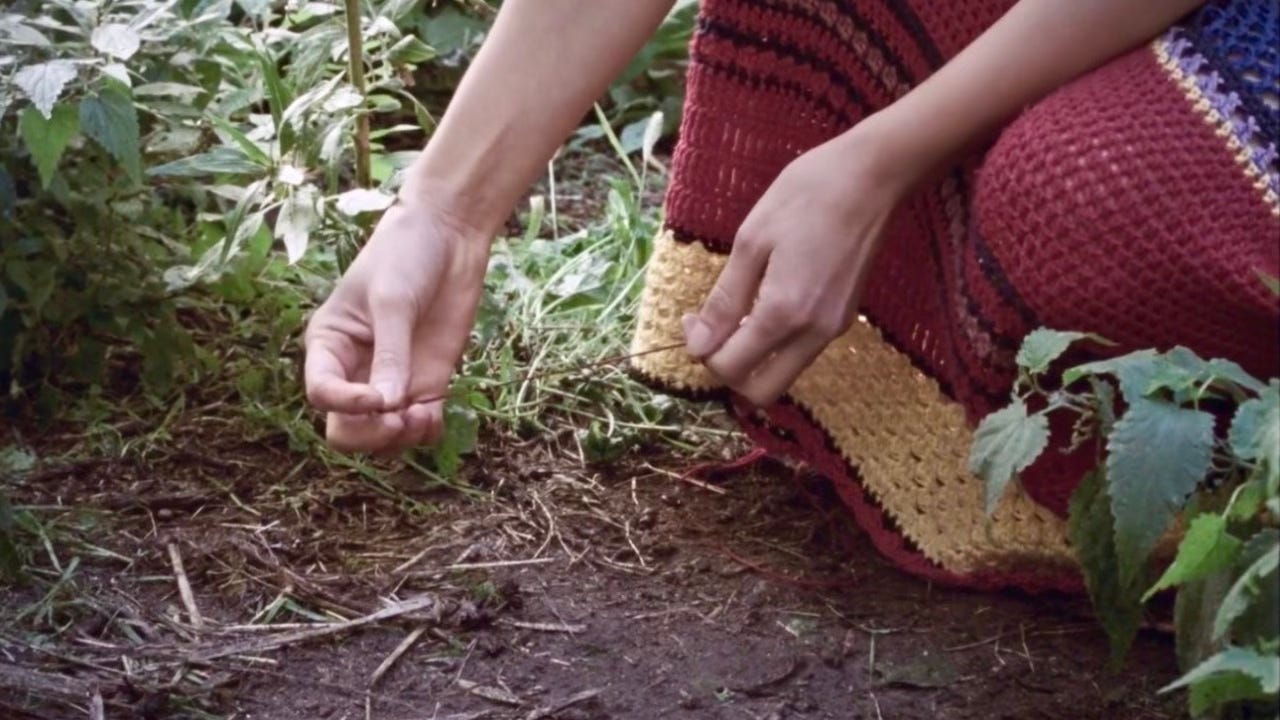La Chimera (2023): Rohrwacher's movie of Love, Loss and Longing
A mystical film by Alice Rohrwacher where the protagonist is faced with two choices. Let go of past ghosts and embrace a promising, albeit unknown future; or dig deeper into loneliness and loss.
La Chimera is my first foray into an analysis of an indie movie. If, like myself, you’ve finally given indie movies a chance because of the endless stream of below average content churned out by major streaming platforms. Then, welcome.
Art, movies and literature are meant to be slowly dissected and pondered on. In a world where we’re constantly pulled aside by new content, constantly vying for our attention, I’m tired of it. After a while it feels empty, just watching something for the sake of watching it. I want to think. I want to think about it and pull it apart and fold it in different ways to see what emerges.
So let’s dive into La Chimera, and see the meaning we can extract from it.
Spoiler alert: if you haven’t seen the movie and want to come to it fresh, I’d recommend coming back after watching it.
Analysis
This is in no way an exhaustive analysis, but merely a way for me to document the imagery or ideas that have stuck with me the most after watching the movie.
Analysis is split into the following themes:
The Dream (foreshadowing)
Grave robbing (longing and mysticism)
Red thread (spiritual connection)
Beige suit (internal decay)
The Dead arise (nearing climax)
Italia (promise of a new life)
Red thread returns (reunited)
The Dream (foreshadowing)
The opening scene does a good job in foreshadowing an important scene towards the end of the movie, and one to keep in mind. Here we find Arthur, played by Josh O’Connor, on a train woken up from a dream of his love, Beniamina, by a ticket inspector who jokes Arthur will never get to experience the end of that dream. Poignant.
The girls in the same carriage as him strike up a conversation and this is how we find out Arthur’s passion for archaeology. Arthur compares the prominent profile of one of the girls to Etruscan paintings he’s seen on artefacts. The girls assume he’s a scientist and he pauses to reflect on what to tell them about how he makes a living but is interrupted by a salesman. As viewers we’re left with this bit of mystery, where we don’t now yet that his passion doesn’t lie in discovery and restoration, but rather in discovery and illegal trade.
Grave robbing (longing and mysticism)
The act of grave robbing is carried out by the poor on behalf of the rich, who in turn are profiteering off their risk-taking, to sell valuable artefacts back to museums and private investors with no care of the provenance of these goods. A selfish interest is exhibited by people on both ends of the financial scale, we see both the rich and the poor taking advantage of a cultural patrimony to satiate their own greed. Both have a seeming disrespect for the dead, and although the rich eventually put these artefacts on a pedestal, they couldn’t care less about the scientific understanding these discoveries could provide of the culture and history. Alice Rohrwacher showing us here the inherent evils of humankind.
When Arthur commences his tracking of graves, it gives me an impression of a sort of divination, where he is tapping into the spiritual world to seek guidance on where the dead lie. As soon as he has made this connection, the image onscreen flips upside down, then flips back. Similar to the movie poster at the top of this article where Arthur hangs upside down by a thread. This is Alice’s way of portraying his communication with the dead without having them outright speak to him. The thread has several meanings which I will expand on below, but here it also shows the fragile connection he has with the spirits. Fragile enough, that if he keeps taunting and stealing from the dead, that thread will snap and he won’t come away unscathed anymore.
Red thread (spiritual connection)
We first come across the red thread in another one of Arthur’s dreams, we see Beniamina’s knit dress unthreading at the bottom as a loose red thread is stuck in the ground. Given this is a memory we’re seeing through Arthur’s eyes after he falls asleep, initially, I thought it was his way of toying with her by burying a loose thread of her dress to see how she would react. Yet, when Beniamina realises and reaches down to dig it out, despite her tugging on it the loose thread won’t give. She looks up at Arthur with a look almost asking “Why?”. Almost as if it’s Arthur trying to hold onto her as hard as he can on the other end of that thread. Not letting go of her soul. Keep this in mind as we carry on.
Beige suit (internal decay)
Onto the beige suit. Arthur is wearing it in the first half and last half of the story. This is the same suit he is imprisoned in before the movie starts (after - assuming - he is caught grave robbing), and the suit he wears on the night of the party when they first find the majestic Etruscan statue. Following this discovery as we carry on through the story where the grave robbers (tombaroli) are deceived by Spartaco, the suit undergoes a state of slow decay. Almost mirroring the internal decay slowly taking root within Arthur.
The Dead arise (nearing climax)
After throwing the head of the statue in the water, Arthur encounters the same group of people from the first train ride. The ticket inspector recognises him and initially we’re fooled into thinking Arthur is having a conversation with a real person. However, he recognises Arthur as one of the grave robbers who took his grave goods, he proceeds to ask Arthur if he knows where they are to return them. More dead find him and then pull him aside asking for their grave goods in turn. We see tears welling up in Arthur’s eyes as he slowly realises who he’s talking too, a moving detail I missed the first time I saw it that changed how I saw Arthur. Until then he felt quite aloof to me about the grave robbing, especially when he rudely casts off Italia when she tries to warn them about stealing and disrespecting the dead. Yet, Arthur never really cared about the money like the others, he lived off of Flora’s charity and slept in a cold, dilapidated shack. His return to the robbing, time and time again, was a way to stay close to Beniamina.
This sorrow is further evidenced in the boat scene, where Arthur is lovingly looking down at a statue head possibly reminding him of Beniamina’s face before he throws it off the boat. This takes me back to how, in the same vein, he compared one of the girls’ side profiles in the train carriage to a painting on an ancient artefact. Arthur might be seeing similar features passed down from the Etruscans to Beniamina’s bloodline. He is stuck in returning back to the shores and the hills of the old Etruscans to find just a shred, if even that, of what is remains of his love Beniamina. He throws the head of the boat because he realises, things aren’t going as he expected, he’s now become disillusioned with grave robbing and leaves the tombaroli.
Italia (promise of a new life)
He finally changes out of the decaying, beige suit to reunite with Italia. Italia has started a new life after being kicked out of Flora’s, ironically, also decaying mansion, in an old train station that belongs to both everyone and no one. Fabriana from the tombaroli has also joined her in search of a new life. Italia seems to be doing well, taking care of the children who despite receiving a lice treatment, are quite happy. Arthur is momentarily tempted by this promise of a new life. His heart first opened to Italia when he watched her dance on the night of the statue being discovered. However, he disregarded her as soon as the potential for a new grave robbing arose and she was against it.
Arthur is welcomed into Italia’s life and second chance at living after her banishment from the mansion. He furtively embraces her then at dawn slips away and leaves both her and the promise of a new future. We don’t really know why Arthur leaves her at the end, right before he closes the door he makes eye contact with Italia who doesn’t say anything to hold him back. Maybe they both know Arthur’s fate is already sealed? Maybe he’s already reconciled himself to death and finding Beniamina above all else, that even the promise of a new love isn’t enough to overcome that.
Red thread returns (reunited)
On Arthur’s final grave robbing, the red thread returns. This is when we find out our protagonist is dead, the spirits may have had enough of Arthur discovering their tombs and artefacts and decided his story must end. Arthur is trapped underground in what could be a form of purgatory, and he is pulling on one side of the thread whilst Beniamina in the afterworld is pulling on the other side above. The thread snaps and Arthur’s hand reaches out to touch Beniamina. They are now finally reunited. This is the end to the dream Arthur had at the beginning of the movie, when the inspector joked he’d never get to see the end of it. Arthur does get to see the end of it, his first dreams ends with him saying “My last woman’s face”, and his death ends with seeing exactly that.
Conclusion
The movie had a slight haunting effect on me after watching it, but I don’t think I fully appreciated it until I finally sat down and pored over my last thoughts and impressions of it. That’s when I was able to put the pieces together and discover the final puzzle Alice Rohrwacher was trying to lay before us.
What I believe works well in this movie is that the mystical and spiritual aspects of the storyline aren’t overly exaggerated or dramatised. Similar to how in life and death, things are just the way they are. It’s up to us to decide whether we want to add frills to it or not. It reminds me of an almost primeval energy and spirituality that we might assign to old myths and fairytales. It’s all very deeply connected with nature, from the dirt gathered on Arthur’s clothes and under his nails to the deep dark cave the statue is found in.
Admittedly, not all movies, regardless of whether they’re indie or not will strike a chord with every viewer. This is, however, one of those movies that demand further thought and investigation to get to its’ meaning. It doesn’t hand them out for you to pick at them lazily, and I enjoy that. I enjoy the temptation it gives to be inquisitive.











A fascinating piece, with an very insightful interpretation of key themes.